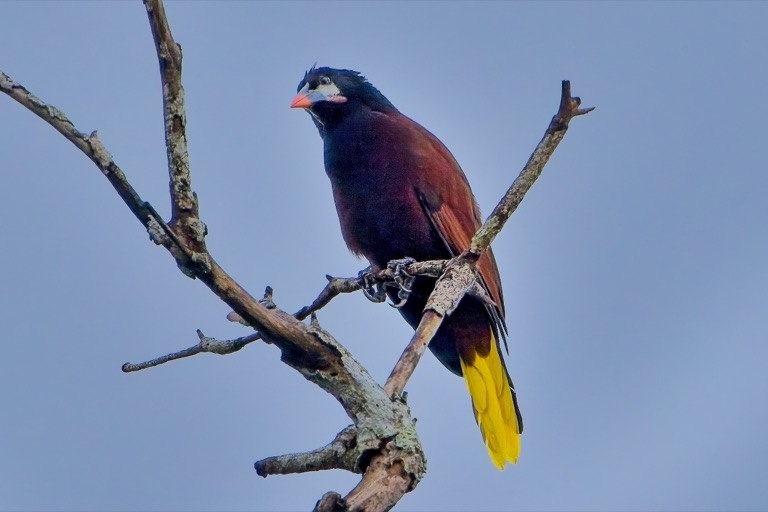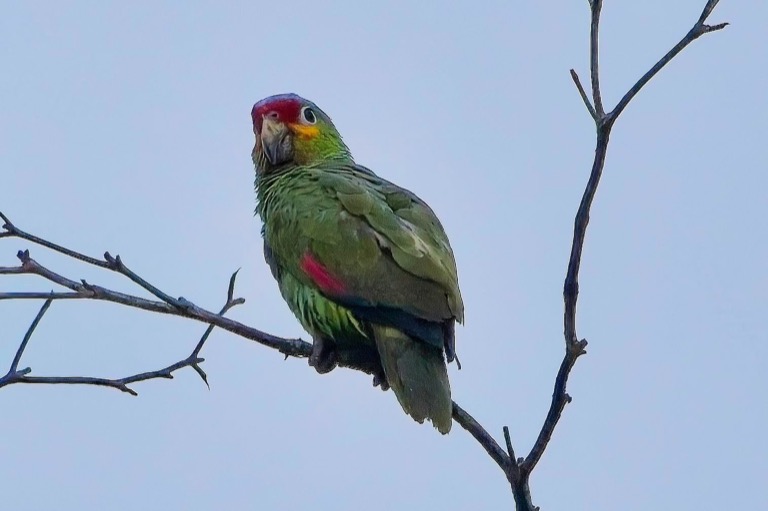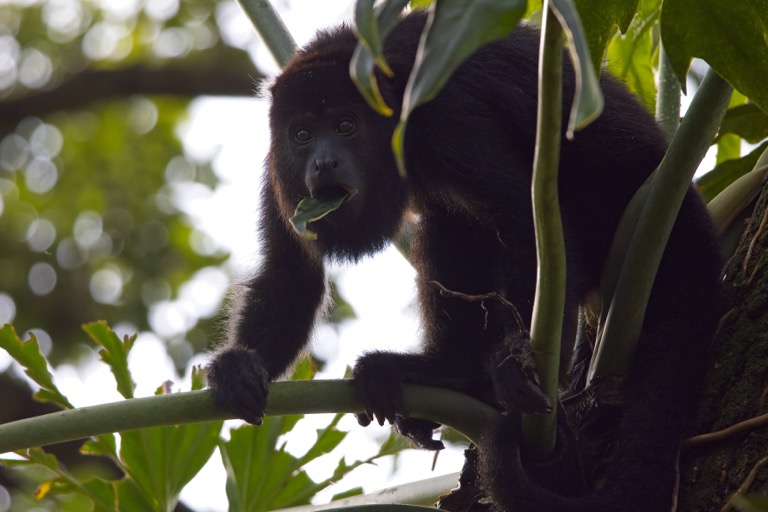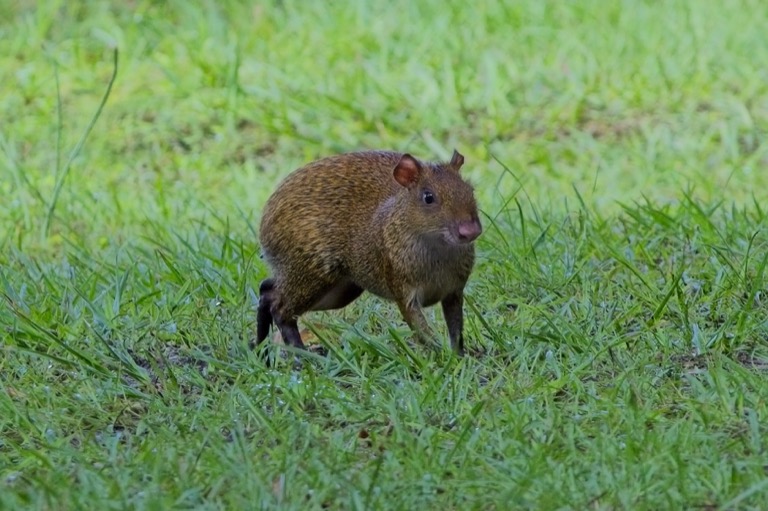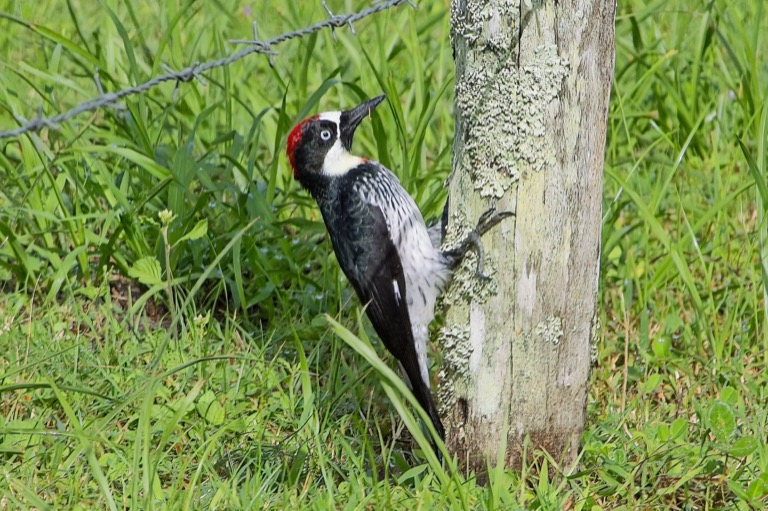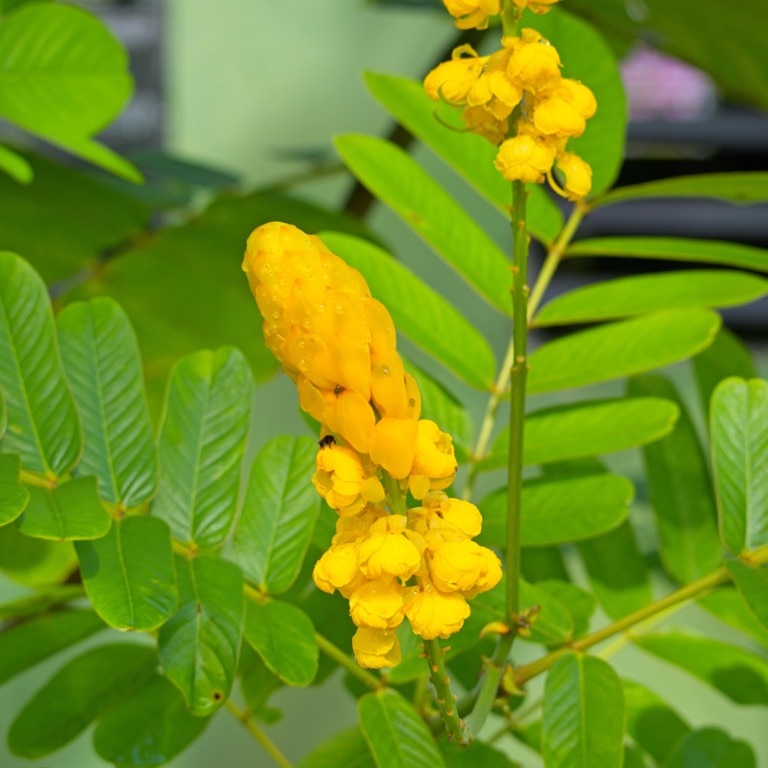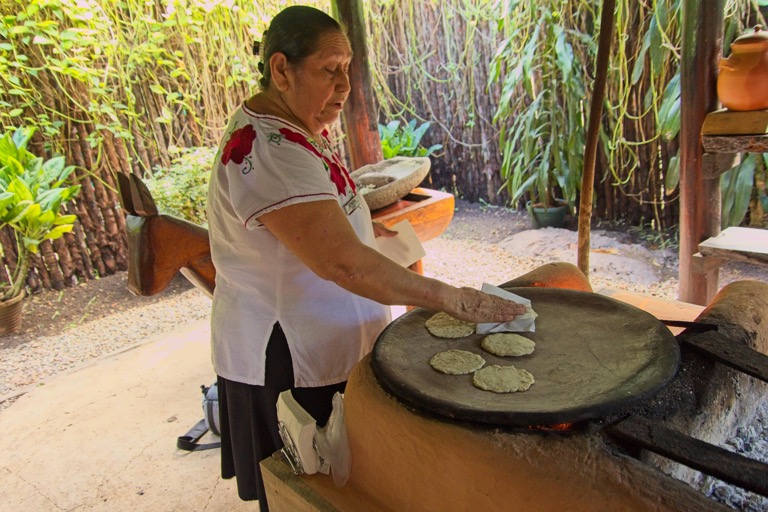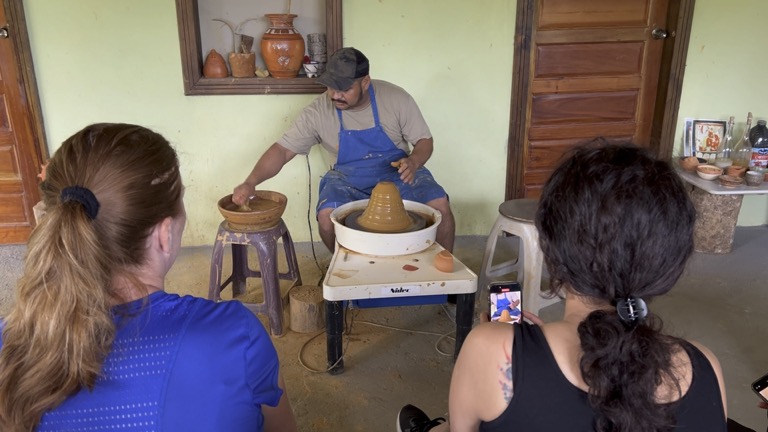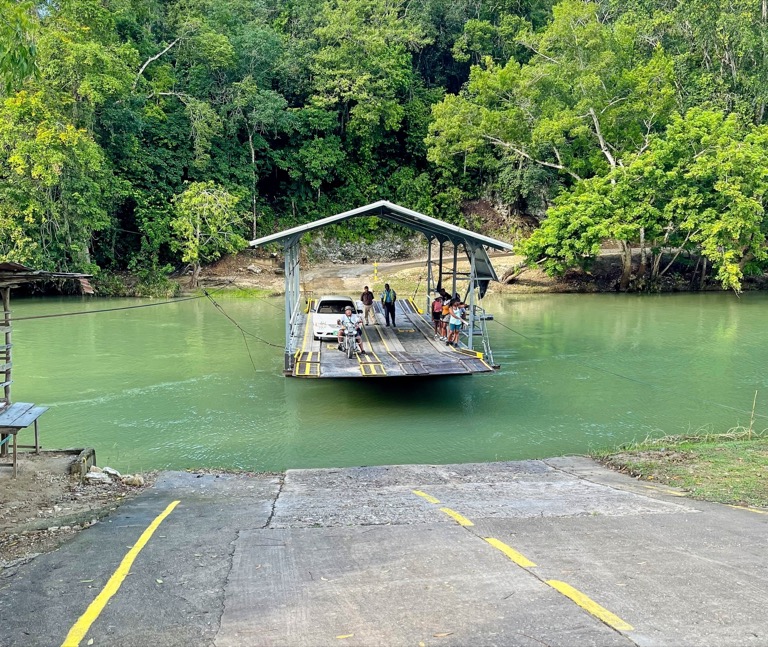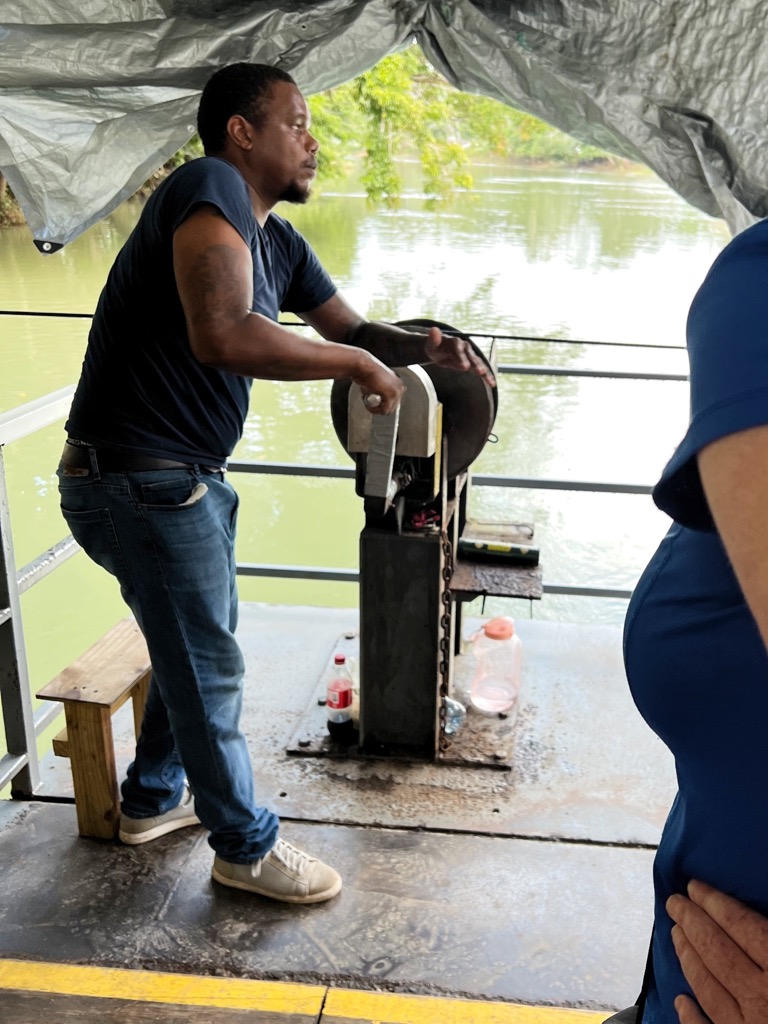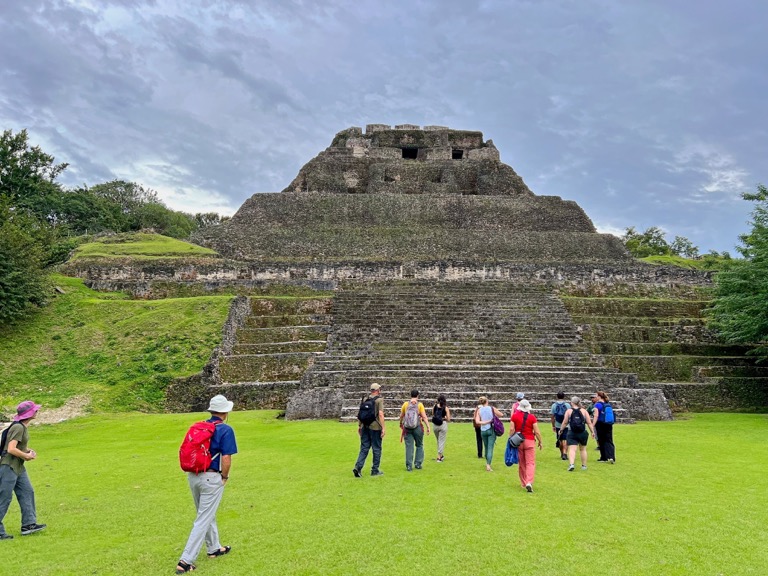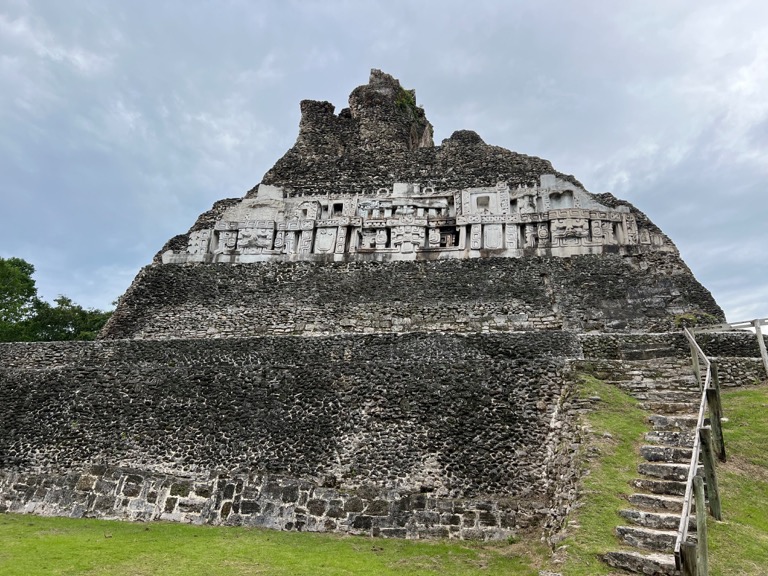on
To San Ignacio
We travel to the town of San Ignacio in western Belize today.
I started out the day before breakfast looking to see what birds were in the area. It was cloudy and sprinkling on and off.
There are several stops along the way, the first is at the Community Baboon Sanctuary.
While it’s named a baboon sanctuary, it’s actually for the Yucatán black howler monkey. The monkeys eat tree leaves which don’t have that much energy in them, so they aren’t that active.
Here is a recording of our guide encouraging one of the howler monkeys to howl for us. The males howl to defend their territory from other males.
While out looking for the monkeys, an Agouti ran across the path in front of us.
We also saw an acorn woodpecker working on a fence post on the way back to the bus.
Then we stop in San Antonio to visit a women’s cooperative that is sponsored by Planet Terra.
First they showed us how to make corn tortillas the traditional way. The dry corn is soaked and cooked. Then while it’s still soft, it’s ground quite fine. Add a teaspoon or two of water during the finer grinding. Now most people use commercially ground corn to make fresh tortillas.
After it’s ground, form it into a 4-inch circle, 3/16 thick. Baked until it puffs up.
We got to do some grinding, but they had enough ground corn ready to go for us to form tortillas and take them over to be cooked, and then we could eat them.
After that it was lunchtime. They served us lunch of chicken tamales and homemade plantain chips.
After lunch, they gave a pottery demonstration. They make traditional designs and patterns.
Potter Raphael talked about how they had to re-figure out the clay recipe. The clay is dug from the river bank. Then it’s dried, pounded, and sifted to clean out small debris. This makes a powered clay. Then fine sand is sifted and 20% sand is mixed with the powered clay and water. It’s mixed with their feet.
When the pot is fully formed, they use a river rock to polish the outside to seal it. Then it’s fired at 1200 for six hours.
After arriving and checking into the hotel, we quickly boarded the tour van to go to Xunantunich, a 9th century Maya site, with Marlin as our driver and tour guide. We’re doing this now so that tomorrow can be a full day for some folks with a tour of either Tikal in Guatamala or Caracol.
You need to cross the river on the hand cranked cable ferry to get to Xunantunich.
When we arrived there were only a few vehicles in the parking lot. Most tourists come in the morning, so it felt like we had the site to ourselves. Xunantunich means “stone woman,” it’s supposedly haunted by a ghost in the form of a woman. It’s the smallest of the sites we’ll visit on this trip. It was more of a ceremonial center surrounded by farms. The big temple at Xunantunich is called El Castillo.
There are some carvings up on the right side of El Castillo, these are fiberglass replicas, the originals are in the museum.
To cross the ferry, only the driver can be in the vehicle, all the other passengers must get out and walk on. On the way back one of the other members of our group asked if they could crank the ferry, so we took turns and did most of the cranking ourselves.
The ferry shuts down at 4:45pm, so we had to delay having the snack we were supposed to eat at the site to after crossing the ferry. There were a series of small souvenir shops that were empty after crossing the ferry, so we stopped and had our snack there.
The hotel has a nice big pool, so some of us got a swim in before going to supper.
